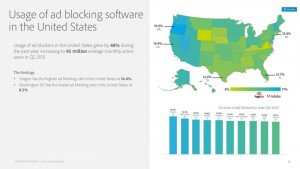Today, smartphones and tablets, are taking over web surfing. In early 2014, Internet usage on mobile devices officially exceeded PC traffic. That’s why it is imperative to have a mobile-friendly, multiple device-compatible website to accommodate this new digital landscape. To meet this demand, responsive design has rapidly become the new standard in web design and development.
Much More Than A Mobile Site
Responsive design is an approach to web development using fluid, proportion-based grids, flexible images, and CSS3 media queries to deliver an optimized user experience across all devices. Responsive design has significantly more advantages for most businesses than simply having a separate mobile site. The design allows your entire website to fully adjust to all devices, delivering a single set of content and code that seamlessly caters to target screen sizes and resolutions. And unlike a mobile site, a responsive website provides the full, information-rich web experience today’s consumers expect from a business.
Viewers Expect More
A couple of years ago, it was okay to have only the bare essentials of information on your mobile site. Now, 85 percent of web users believe a company’s mobile website should be just as good as or better than their desktop site. This means that your visitors want the full experience of your desktop site on their mobile device. This includes easy navigation, access to tools, such as the search bar and shopping cart, and the ability to perform the intended action for each page, like purchasing or submitting a form. Since many visitors are going to view your same site on multiple platforms – perhaps first on their desktop at work, then on their smartphone during lunch, then at home on their tablet – it will be frustrating if your site looks and responds differently each time. A responsive design makes it easy for customers to find, understand, and share your content, which makes for an overall better user experience and improved brand impression.
Reduction In Bounce Rate And Loading Time
If your website doesn’t work properly on mobile devices and users are leaving your page after a few clicks, your bounce rate will be high. When Google detects a high bounce rate, it will give your site a lower quality score and therefore rank your site lower, which will ultimately decrease your site traffic. A responsive design helps to reduce bounce rate because the view of your site is adapted and consistent with every device. Also, a responsive design does not use queries to redirect users to another URL like a mobile-only site does, so this reduces the load time of a page which can also increase your site’s search ranking.
Google Says So
Recently, Google has made a couple adjustments in terms of favoring mobile-friendly websites overall. Last November, Google incorporated mobile-friendly labels as part of search result descriptions in an effort to communicate to searchers on a mobile device the sites that are mobile-friendly. Furthermore, starting April 21, 2015, Google announced through their Webmaster platform that they will use mobile-friendliness as a ranking signal and boost rankings for mobile-friendly sites. It is true that both mobile-only sites and responsive sites will pass these tests. However, Google openly recommends using responsive web design versus a mobile-only site. Specifically, Google recommends that “webmasters follow the industry best practice of using web design, namely serving the same HTML for all devices, using media queries to decide rendering on each device.” This statement is key for marketers. As the backbone of responsive design, media queries allow websites to adapt to any screen size.
It is quite obvious why Google thinks responsive design should be “industry best practice.” When Google ranks websites, one of the factors looked at is site traffic, since more traffic equals more credibility. With a separate site for mobile and desktop, traffic is split between different sites, and credibility is thereby divided. As a result, Google theoretically won’t rank your site as high since it is looking at two sites instead of one. Also, having one core domain means one set of pages and files, which makes it easier for Google and other search engines to crawl and index your content. This added benefit of responsive design is great for organic search rankings as well, making responsive design ideal for search engine optimization (SEO).
Easier Tracking
Having several versions of your site makes it harder for marketers to evaluate your site’s statistics and make educated, accurate business decisions. However, having a single, responsive website affords you the option to track visitors and traffic based on the clicks received without having the data divided among a number of website versions. This will give you a more accurate representation of goal conversions, amount of visits, source of visits and more.
Cost Effective And Efficient
If you are in the market for a website build or redesign, you might have noticed building a fully-responsive website may cost more upfront than building a desktop-only site or a separate mobile site. However, a responsive site will save you money in the long run. Since building a responsive site involves separate design templates for each device or browser size, there is one single set of files and one set of content. This means that future content updates can be done in one place, cutting down on maintenance time and eliminating version control issues.
Future Flexibility
Speaking of saving moola, responsive design also implements a forward-thinking strategy that is flexible enough to adapt to future devices, which is a drawback of a mobile-only site. With a responsive website, when new devices are continually introduced, your site will be as future-proof as it can be.
CMS Compatible
If you are evaluating which content management system (CMS) to use for your website project, be sure to check whether it supports responsive design. Many of the top CMS platforms, including Sitefinity, Kentico, Sitecore, and others have built-in features to support responsive design. This will allow for more cost-effective responsive site development but also enable future template development and site changes to work seamlessly across devices.
Responsive Sites – The New Must-Have
With the increasing use of smartphone and tablets, a business is expected to have a website that is not only mobile-friendly but consistent and user friendly across all devices. Having a responsive website will help provide a better user experience, support search engine optimization goals, save your business time and money long-term, and will give your website a competitive advantage over businesses that haven’t yet invested in this technology.
(349)
Report Post






